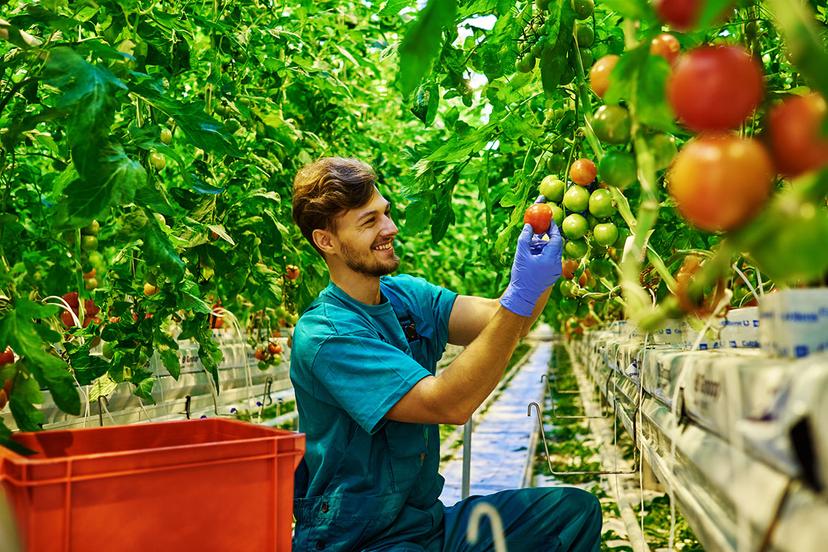Agriculture

Structure
The American agricultural industry is vast and diverse. It is made up of the farmers who cultivate the land, raise livestock, and grow plants; the industries that purchase, process, distribute, and transport farm products and farm supplies; and the organizations that supply services to the farmer and the consumer. This whole complex network of activities is often called agribusiness.
The base for all agricultural work is the farm. The average farm is run by a farm operator or a farm manager, who in most cases has attended college and earned an agricultural degree. Farms usually employ both permanent and seasonal workers. Part-time employees work during the harvest and planting seasons, and permanent employees are responsible for the day-to-day operations of the farm throughout the year.
Single-crop farms are commonplace. On these farms, the cash crop (the crop that is grown for sale) is the only item produced. Wheat and corn single-crop farms are widespread throughout the Midwest and Plains states. Specialized livestock production is mainly centered on cattle, hogs, and poultry operations in the United States. Sheep, goat, turkey, and aquaculture (fish) farms are examples of single livestock operations.
Diversified farms produce several different crops or animals, or a mixture of both, for sale. The old-style family farm was often a diversified farm. These farms are less common now, partly because of the simplicity of specialized production, but mainly because the profit margin is often higher with single-crop production. Land is normally well suited to only a few types of plants or animals, which makes diversification difficult. However, the diversified farm is less dependent on the success of a single item. Drought, disease, and other natural disasters may take less of a toll on the farm that produces many different products.
Farmers depend on other industries to provide seed, fertilizer, and machinery. After the crops are harvested or livestock are bred, output industries process and market the farm products. Storage, shipping, processing, packaging, and canning are just some of the industries that assist the farmer in the sale of goods. For example, a shipping company makes sure that a farm's produce reaches the customer in the best condition for sale. A storage company makes sure that all of a farm's apples produced in September do not arrive at the store on the same day. It will store some of the apples for future sales, schedule future deliveries, and can some produce for off-season sales. These are all important aspects of agribusiness.
To ensure sales of their produce, farmers can arrange to sell their crops before producing them. This is known as contract farming, and it has benefits for both the buyer and the farmer. It is an arrangement between a farm and a buyer, such as a food processor or marketer, to ship the produce to the buyer upon harvesting. The farmer must agree to a price at the time of the contract. If there are a lot of successful crops of the type the farmer sells, the farmer may get a higher price for the crops in a contract than if he had waited for the harvest and bid with many other farmers waiting to sell their goods. However, if crop production is low, then the buyer may get a cheaper price on a product if the buyer arranged the contract early in the season, before the farmer knew that there would be fewer of the items produced than normal. In an open sale, the farmer would be able to raise the price, because there would be more people trying to buy from him.
In 1862, the U.S. Congress gave each state a land grant that consisted of 30,000 acres of land for each senator and representative in Congress. The state was to sell the land and use the proceeds to build a college that would specialize in education for agriculture and engineering. Some states created new universities, and some funded colleges in universities that were already established. The University of Illinois and the University of California are two well-known land-grant universities. State universities with agricultural schools are usually affiliated with research centers called agricultural experiment stations.
Experiment stations conduct research on farming techniques to develop the most effective methods of farming for each region. Scientists at the stations work with soils, crops, feed rations, animals, plant variations, and genetic strains to devise the best farming method for the climate and the zone in which they work. Some states have several stations working in different areas to account for regional differences.
